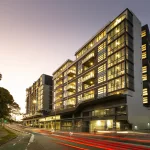Singapore’s media industry is charting strong growth as one of the fastest growing sectors in Asia.
Singapore’s media sector has been performing strongly, posting a compounded annual growth rate (CAGR) of 6.8% between 1997 and 2008. In 2009, the industry contributed S$6.4 billion in value-added (VA) and S$23.9 billion revenue to the economy, and employed some 66,000 workers. Singapore’s media sector consists of several industries, including TV broadcast and production, publishing and printing, film and music; as well as interactive and digital media.
INTERACTIVE AND DIGITAL MEDIA: THE FASTEST GROWING SUBSECTOR
Interactive and Digital Media -which includes video games, animation, online/mobile media and new forms of digital entertainment – has skyrocketed into a multi-billion dollar business. The global videogames industry (excluding hardware sales) is expected to swell from US$56 billion in 2010 to US$82 billion by 2015, with Asia registering the fastest growth, according to the PriceWaterhouse Coopers’ Global Entertainment & Media Outlook.
Singapore’s animation and games industries are seeing rapid expansion. Singapore is seeing an influx of leading digital media companies such as Tecmo-Koei, Lucasfilm, Double Negative, Electronic Arts and Ubisoft. Local companies like Ratloop Asia, Sparky Animation and Scrawl Studios have also responded eagerly too, producing original content for export and entering strategic partnerships with international distributors.
According to Deloitte, Singapore’s games and animation industries, together with online/mobile media, have demonstrated robust growth, posting a CAGR of 26% from 2006-2010. In 2010 it contributed $1.2 billion in VA and $1.5 billion revenue to the economy, and employed an estimated 11,000 workers.
A CENTRE FOR CONTENT CREATION
Singapore is an ideal location for creating and deploying new content and for managing intellectual property (IP), as it has the best IP protection in Asia and a large, multilingual talent pool in both traditional and new media. Development and animation studios, and companies which provide game hosting will also find Singapore attractive due to the island’s large pool of graduates in IT and programming. For companies in the printing and publishing sector, Singapore is a nexus for Asian financial and professional news, and a cost-effective printing and distribution hub.
WHERE EAST MEETS WEST
Singapore offers proximity and excellent connectivity to regional markets – markets that have a tremendous appetite for digital media entertainment. As a cosmopolitan, urbanised Asian city-state, it offers a unique blend of Eastern and Western cultural influences. The government has also put in place policies to attract and retain talent from all over the world, creating a melting pot of creative talent for companies to tap into.
A BROADCAST HUB OF ASIAN MOVIES
Since the 1990s, Singapore has attracted a number of global broadcasters to its shores. There are now a large number of major networks up-linking their channels from Singapore to their regional audiences. These include Discovery Networks Asia Pacific, CNBC Asia Pacific and ESPN Star Sports. From broadcast, the sector has progressed into content production. One example is the 2011 AXN reality series “Cash Cab Asia”. Produced by AZN, the project was filmed in Singapore, with post-production work undertaken by Active TV.
ASIA’S FIRST DIGITAL CINEMA HUB
In December 2007, Technicolor of the US said it was partnering Singapore’s Infocomms Development Authority to set up a Digital Cinema Hub and Network Operations Centre. Both are firsts in Asia. This offers digital cinema service and related management solution capabilities to the motion picture industry in Singapore and Asia-Pacific. A month before, an Interactive Digital Centre for 3D visualisation at Temasek Polytechnic was launched. It houses state-of-the-art 3D innovative technologies and laboratories for industry project development, training and research.
A LEADING INTERACTVE DIGITAL MEDIA CENTRE
The presence of top specialty schools like DigiPen, excellent pedagogy within the local tertiary institutes, as well as opportunities to pursue overseas attachments with leading international interactive and digital media companies will help Singapore establish a world-class talent base. Together with the inflow of global talent, this results in diversity that is highly conducive to the generation of creative ideas.
FILM PRODUCTION
Hollywood may still be the world’s biggest film production location but, thanks to the likes of visual-effects company Double Negative, Singapore is fast becoming an Asian hub for the industry’s back-room operations. The London-headquartered firm opened an office here in 2009 with around 70 staff and now employs 230. Since then, the Singapore-based team has worked on visual effects for blockbusters such as The Bourne Legacy, Captain America and Iron Man 2.
Nathan McGuinness, Double Negative’s creative director, says the city manages to be both a “comfortable, safe place for business” and a haven for artists. Noting that his team comprises Singaporeans, regional talents and international artists, he likens his Singapore facility to “the UN of visual effects”. Among Double Negative’s recent works on the silver screen is the Les Miserables musical. “From this island we’re providing visual effects to the biggest films in the world,” says BAFTA winner McGuinness. “That’s a pretty amazing situation to be in. We’re as busy as we would be anywhere else in the world.”
Lucasfilm
Lucasfilm is one the most recognisable names in motion pictures and animation, having created blockbusters such as Star Wars and Indiana Jones. In 2005, the California-based company established its first facility outside of the US – Lucasfilm Animation Singapore (LAS). The Singapore studio does animation and game development as well as visual effects work for Hollywood films. LAS has also created an in-house apprentice programme, aptly named the Jedi Masters Programme (JuMP), to educate and train developing artists in a variety of creative disciplines.
Electronic Arts Inc.
Electronic Arts Inc., the world’s largest video games developer and publisher, has located its Asia Pacific headquarters in Singapore. Citing the support of the Singapore government as a key motivator, Singapore is also one of EA’s largest game development studios in the region which develops online games for the international audience.
EA Asia-Pacific
EA Asia Pacific’s President Jon Niermann said, “EA aims to grow its business in the region, we’re here with a big presence and Singapore provides the resource base for EA to reach out to a wide global network with strong support from the various government agencies. We’re confident that the growth for the coming years will be positively beneficial to EA and our Asian partners.
Sony Pictures Entertainment
Sony Pictures Entertainment (SPE) currently has three operating entities in Singapore with a combined headcount of over 200. One of these is SPE Networks – Asia, its channel management arm for Asia Pacific. It manages linear channels such as AXN, Animax, AXN Beyond, Sony Entertainment Television, as well as subscription video-on-demand channels (e.g. PIX and PIX Thriller) and is responsible for producing television hits such as “The Amazing Race Asia” and “Mondo Magic Singapore”.
Thomson Reuters
Thomson Reuters, the world’s leading source of intelligent information for businesses and professionals, has seen tremendous growth in its operations here. In addition to being a regional headquarters, Singapore is now base to Thomson Reuters ASEAN, South Pacific and Pacific channel business operations. Today, Thomson Reuters employs about 900 staff in Singapore. The main technical centre located here is one of Thomson Reuters’ three major global hubs. In addition, Singapore is base to the company’s global pictures desk, and is also the main location for the hosting and distribution of Internet content in Asia.
































